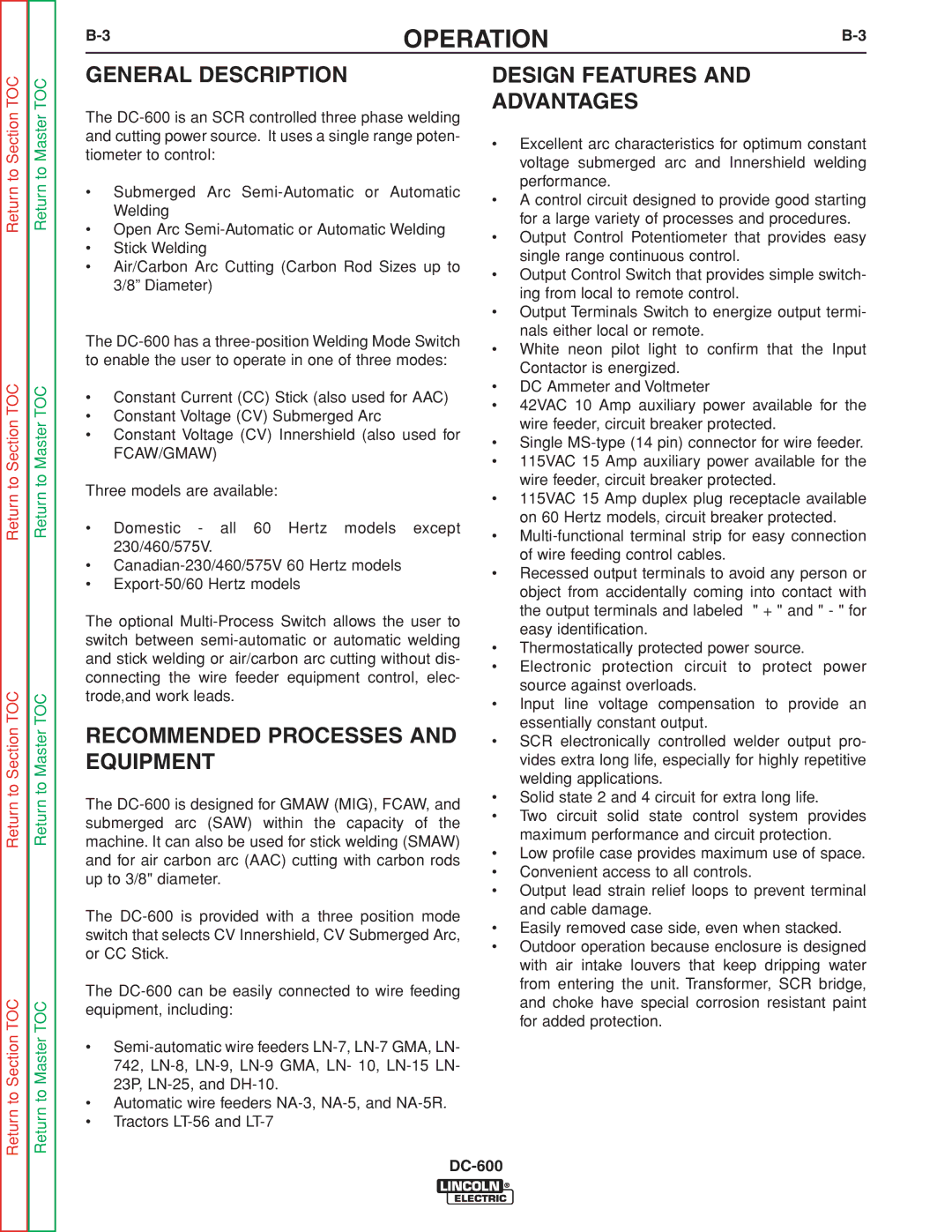
OPERATION |
Return to Section TOC
Return to Section TOC
Return to Section TOC
Return to Section TOC
Return to Master TOC
Return to Master TOC
Return to Master TOC
Return to Master TOC
GENERAL DESCRIPTION
The
•Submerged Arc
•Open Arc
•Stick Welding
•Air/Carbon Arc Cutting (Carbon Rod Sizes up to 3/8” Diameter)
The
•Constant Current (CC) Stick (also used for AAC)
•Constant Voltage (CV) Submerged Arc
•Constant Voltage (CV) Innershield (also used for FCAW/GMAW)
Three models are available:
•Domestic - all 60 Hertz models except 230/460/575V.
•
•
The optional
RECOMMENDED PROCESSES AND EQUIPMENT
The
The
The
•
•Automatic wire feeders
•Tractors
DESIGN FEATURES AND
ADVANTAGES
•Excellent arc characteristics for optimum constant voltage submerged arc and Innershield welding performance.
•A control circuit designed to provide good starting for a large variety of processes and procedures.
•Output Control Potentiometer that provides easy single range continuous control.
•Output Control Switch that provides simple switch- ing from local to remote control.
•Output Terminals Switch to energize output termi- nals either local or remote.
•White neon pilot light to confirm that the Input Contactor is energized.
•DC Ammeter and Voltmeter
•42VAC 10 Amp auxiliary power available for the wire feeder, circuit breaker protected.
•Single
•115VAC 15 Amp auxiliary power available for the wire feeder, circuit breaker protected.
•115VAC 15 Amp duplex plug receptacle available on 60 Hertz models, circuit breaker protected.
•
•Recessed output terminals to avoid any person or object from accidentally coming into contact with the output terminals and labeled " + " and " - " for easy identification.
•Thermostatically protected power source.
•Electronic protection circuit to protect power source against overloads.
•Input line voltage compensation to provide an essentially constant output.
•SCR electronically controlled welder output pro- vides extra long life, especially for highly repetitive welding applications.
•Solid state 2 and 4 circuit for extra long life.
•Two circuit solid state control system provides maximum performance and circuit protection.
•Low profile case provides maximum use of space.
•Convenient access to all controls.
•Output lead strain relief loops to prevent terminal and cable damage.
•Easily removed case side, even when stacked.
•Outdoor operation because enclosure is designed with air intake louvers that keep dripping water from entering the unit. Transformer, SCR bridge, and choke have special corrosion resistant paint for added protection.
